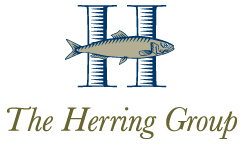This article originally appeared on LandscapeManagement.net on February 12, 2021. Greg Herring regularly writes for Landscape Management, providing financial analysis and insights tailored to landscape business owners.
If a landscape company wants to grow its landscape maintenance revenue, it can:
- Sell more maintenance contracts
- Lose fewer existing maintenance contract customers
- Sell more ancillary services (e.g. enhancements and irrigation) to its customers
- Increase its prices on existing customers
- Acquire other landscape businesses
As discussed in previous articles, BrightView needs to grow to maintain its stock price and repay its lenders.
Certainly, the presence of COVID-19 can make growth more difficult just as it can mask problems.
BrightView’s revenue declined from $570.7 million to $554.4 million for the quarter ended Dec. 31, 2020 compared with the quarter ended Dec. 31, 2019. In 2020, BrightView sold its tree farm and divested of certain other assets which caused a $7.5 million reduction in revenue in the most recent quarter. Revenue from its construction division, before considering the impact of acquisitions completed after Dec. 31, 2019, declined $13.2 million. Revenue from landscape maintenance services declined $23.8 million before acquisitions. Acquisitions provided $23.6 million of landscape maintenance revenue, $0.1 million of snow removal revenue, and $4.4 million of construction revenue during the most recent quarter.
BrightView stated that its landscape maintenance revenue is down prior to acquisitions due to reduced demand for ancillary services related to COVID-19.
BrightView also noted that its year over year quarterly maintenance contract revenue declined 2 percent before considering revenue from acquisitions completed after Dec. 31, 2019. After acquisitions, this revenue increased 3 percent.
Before acquisitions, the overall decline in landscape maintenance revenue was 6.6 percent in the quarter ended December 31, 2020 as compared with the quarter ended Dec. 31, 2019.
BrightView’s negative organic growth compared with the industry
Recently, The Herring Group completed its 2020 Landscape Industry Benchmark Report. The report contained data from 97 companies for the 12 months ended Sept. 30, 2020. The average year over year revenue growth rate of the 84 companies that reported results for the past two years was 7.6 percent. The combined annual revenue for these companies was $599 million and included revenue from maintenance contracts, snow removal, construction and ancillary services.
BrightView’s revenue declined 6.7 percent in the 12 months ended Sept. 30, 2020 as compared with the prior year before considering the revenue from acquisitions completed during this period.
The companies participating in the Benchmark Report include companies servicing residential and commercial customers. BrightView only serves commercial customers.
While the comparison is imperfect, it is interesting. Collectively, revenue from the 84 companies grew 7.6 percent while BrightView’s revenue declined 6.7 percent.
Valuation and acquisition pipeline
BrightView’s recent stock price of $15.07 per share implies an enterprise value of 10.6 times EBITDA (earnings before interest, taxes, depreciation and amortization).
BrightView stated that it is acquiring companies at 5-7 times EBITDA.
Note that the EBITDA measure can be calculated in different ways based on what adjustments one makes to “earnings.”
BrightView disclosed that it has $400 million in annual revenue in its pipeline of potential acquisitions.
Other interesting data
The company is launching autonomous mowing on several properties this year.
While BrightView estimated snowfall dropped 14 percent in its markets, the company’s snow removal revenue was unchanged from the same quarter in the previous year. The company was able to grow its base of snow contracts. Acquisitions had virtually no impact on the year over year quarterly comparison of snow removal revenue.
The numbers
In its public reports, BrightView “adjusts” its earnings before interest, tax and depreciation and net income for certain expenses. I have used some of these adjustments for operating income in the tables below. The idea is that these expenses are not part of ordinary operations. Historically, the adjustments included expenses associated with business transformation and integration, becoming a public company and defending shareholder lawsuits, and paying some employees partially through equity-based compensation. The most recent four quarters also included an adjustment for $21.3 million in COVID-19 related expenses. In the table below, I did not adjust the results for COVID-19 expenses because they are a normal part of operations for landscape companies now. In addition, BrightView included an adjustment for the $22.2 million loss on sale of the BrightView Tree Company which I included as an adjustment in the quarter ended Sept. 30, 2020.
Finally, in the quarter ended June 30, 2020, BrightView recorded an expense of $24.1 million to increase reserves related to its self-insurance program. Typically, a reserve is based on estimates from current and prior quarters, however, there is not sufficient information to determine the precise timing of when it should have been expensed. Therefore, I have included it as an adjustment. If the additional expense were spread over the prior two years, the net operating profit margin for those periods would have been reduced by approximately 50 basis points (0.5 percent).
For the accounting experts: Note that I have excluded from operating income the expense related to the amortization of intangible assets that were recorded as BrightView acquired other businesses. Since most landscape companies do not have amortization of intangible assets, I have excluded it, so they can compare their numbers to BrightView’s numbers.
To see short-term trends, the following table shows operating results for each of the past five quarters:
| Qtr Ended Dec-19 | Qtr Ended Mar-20 | Qtr Ended Jun-20 | Qtr Ended Sep-20 | Qtr Ended Dec-20 | |
| Net service revenues | $570.7 | $559.1 | $608.1 | $608.1 | $554.4 |
| Year-over-year growth rate | 7.4% | 8.5% | -6.3% | -7.5% | -2.9% |
| Cost of services | 427.7 | 426.8 | 451.7 | 444.5 | 420.8 |
| Gross profit | 143.0 | 132.3 | 156.4 | 163.6 | 133.6 |
| Gross profit margin | 25.1% | 23.7% | 25.7% | 26.9% | 24.1% |
| Selling, general and administrative expenses | 130.3 | 126.9 | 131.8 | 138.4 | 123.3 |
| Adjustments | (18.1) | (15.0) | (39.8) | (35.2) | (11.6) |
| Ongoing selling, general and administrative expenses | 112.2 | 111.9 | 92.0 | 103.2 | 111.7 |
| Adjusted operating income | $30.8 | $20.4 | $64.4 | $60.4 | $21.9 |
| Operating profit margin | 5.4% | 3.6% | 10.6% | 9.9% | 4.0% |
To see long-term trends, the following table shows operating results for each of the past four years:
| Year Ended Dec-17 | Year Ended Dec-18 | Year Ended Dec-19 | Year Ended Dec-20 | |
| Net service revenues | $2,264.7 | $2,328.5 | $2,449.3 | $2,329.7 |
| Year over year growth rate | 2.8% | 5.2% | -4.9% | |
| Cost of services | 1,668.4 | 1,713.0 | 1,800.0 | 1,743.8 |
| Gross profit | 596.3 | 615.5 | 649.3 | 585.9 |
| Gross profit margin | 26.3% | 26.4% | 26.5% | 25.1% |
| Selling, general and administrative expenses | 431.6 | 471.4 | 472.5 | 520.4 |
| Adjustments | (38.8) | (67.2) | (46.4) | (101.6) |
| Ongoing selling, general and administrative expenses | 392.8 | 404.2 | 426.1 | 418.8 |
| Adjusted operating income | $205.3 | $211.3 | $223.2 | $167.1 |
| Operating profit margin | 9% | 9.1% | 9.1% | 7.2% |

